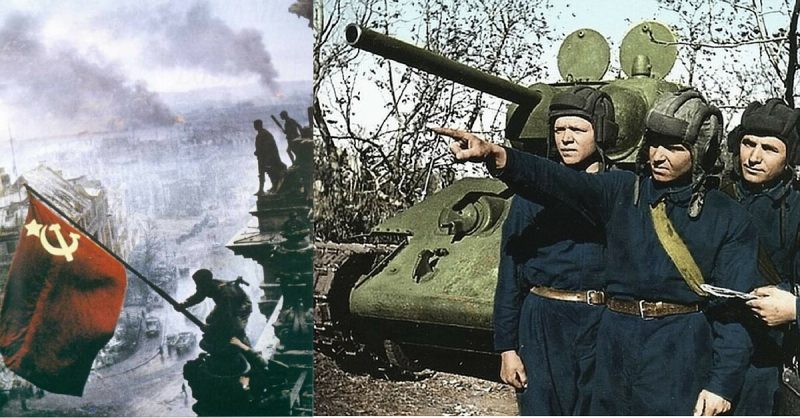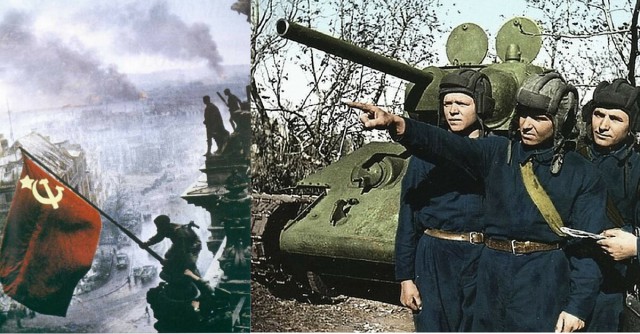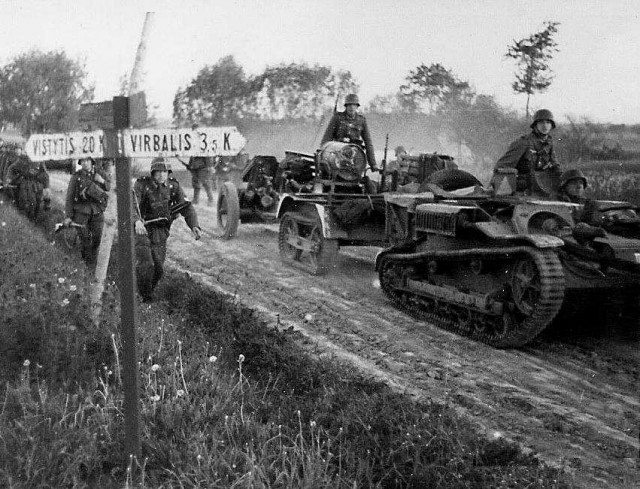There is not one singular, conclusive reason for the decisiveness of the role of the USSR in the eventual defeat of Nazi Germany – more so an amalgamation of factors that together proved significant.
Arguably some of the key reasons for the eventual defeat of Nazi Germany and the USSR’s decisive role in this include the harsh winters both the Germans and Soviets endured in 1941-43 and the Soviet adaptability and common experience of this, the lack of German preparedness with comparison to the Soviets in winter warfare, the lengths the USSR would go to protect the ‘Motherland’ (Russia-Rossiya-Matushka-) through ideals such as the scorched earth policy, the wide spread communist work effort throughout the USSR, the sheer size and geography of the USSR, the relentless fighting spirit of the Soviets and the blood the Soviets were prepared to spill through self-defence and acts of vengeance.
The Fateful Decision
After defeat and disappointment in the skies over Britain for the Luftwaffe during the Battle of Britain in 1940, and the subsequent failure to launch Operation Sea Lion (the full scale invasion of Southern England); Hitler turned his attentions eastward.
Many historians argue that the decision not to launch a full scale attack on Britain and to instead attack the Soviet Union was one of the most foolhardy military actions in history, one that would eventually lead to the fall of Nazism and the end of WWII in Europe.
Sea Lion to Barbarossa
In the late summer of 1941 the German armies, along with their fellow allies, (mainly that of the Hungarians, Romanians, Italians and the Austrians) launched ‘Operation Barbarossa’ – the surprise attack on the Soviet Union. Early on the attack gathered pace, swooping into Soviet territory and after just three months the German armies had encircled, killed or taken prisoner hundreds of thousands (some historians argue millions) of Soviet troops, but this soon began to lose momentum. Blitzkrieg (Lightning war) is the term used to describe the Nazi method of surprise attack, speedy attack, to overwhelm their enemies quickly and effectively and to gain as much land mass, resources and domination as quickly as possible, before their enemies could retaliate.
This method of attack mainly utilized the pincer attack, whereby two armies or more would encircle troops and land and cut off whole armies, leaving no chance of retreat. This method was very effective and successfully led Nazi Germany through its early war efforts with the invasions of Poland, France, Norway and many other countries within Western Europe during 1939-1940. Again this method proved decisive with the initial attacks on the Soviet Union, always moving closer to the heart of the USSR and the Capital of Russia, Moscow. However, where the German attacks before where achieved in record time, before troops started to feel tired and before the German armies ran low on fuel and supplies, the attacks in the Soviet Union and within ‘Barbarossa’ were not so successful.

The Soviet Union was a different story – not only was it so extensive and so large as to make this a difficult tactic, but the Soviet dogged resistance was a determined and relentless force. As 1941 progressed and moved towards winter the Soviet landscape and incredibly harsh weather proved decisive. Hitler had not planned for winter warfare; in fact he grew angered when his generals spoke of it. Hitler’s sheer arrogance and belief in the Nazi war machines ability, foolishly led him to believe the attacks on the USSR would be the same as those mounted before throughout Western Europe – over quickly and successfully. Although the surprise invasions at first took many millions of soldiers, soon the Generals in Moscow had amounted millions more men from all over the Soviet Union to fight back against the Germans.
As the months dragged on, the momentum slowed for the Germans, the Soviet resilience grew and most importantly the winter snows and harsh cold began to mount. As winter came, German troops were left with little in the way of supplies, and the supplies they did have were progressively frozen. Tanks could not move due to the frozen fuel and weaponry would not work. Proper winter clothing was not supplied and subsequently German soldiers died in their thousands.
The attack ground to a halt. During these decisive few months of winter, a feeling became apparent in Moscow that this was exactly what the Soviets needed. The Soviets knew that as of spring 1942, and after the winter snows had thawed, a new offensive would be mounted – so they worked tirelessly to prepare, all whilst repelling German attempts to advance. The winter gave the Soviets, accustomed to these cold conditions, the chance to resupply, re-armour and gather their armies, and they did so, in their millions.
A New Year and a New Offensive
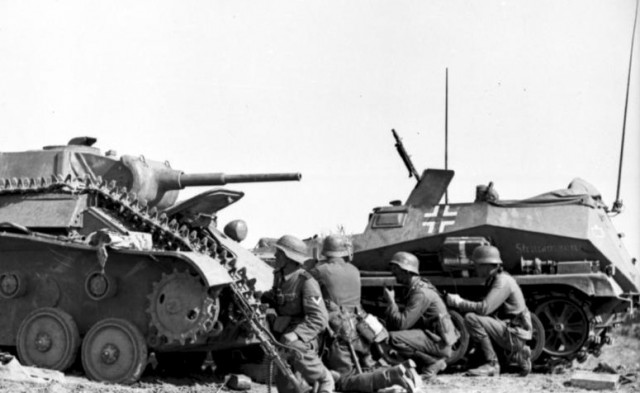
As spring 1942 came the Germans were almost fully operational as they were in 1941 with their initial attacks, and they indeed launched a new offensive in the early summer month of June, codenamed ‘Case Blue’ (German ‘Fall Blau’). Where the operation was successful, they also came against a much stronger resistance from the Soviets than they did in the summer 1941. The communist regime gathered all of its might and fought back with a vengeance. Still the Germans moved forward, however this time they were not so confident. The Soviet mentality from the highest of politicians and generals down to the regular Red Army soldier adopted an incentive of ‘not one step back’.
Strict orders right from the top ensured that any Red Army soldiers captured or found to be retreating were either shot or to be sent straight to the Gulag camps (Soviet forced labour camps) for many years to come. Soviet families of soldiers who were captured would be cut off from the state and would not receive much needed assistance. This incentive to fight and die to the very last man as a heroic Soviet soldier of the motherland appeared to be an effective tactic for success. One German soldier wrote in his diary, ‘Everywhere the Russians fight to the last man’. This sheer determination and use of scare tactics from Stalin (with new issued orders coming daily for ‘no retreat’) proved critical. For every man the Germans killed or captured, ten more would attack. The Germans had not estimated the size and willingness to fight of the USSR.
As 1942 continued, the German’s slowly moved further into the Soviet Union, although not with the same impetus as in 1941. As Stalin ordered more fighting men forward, Hitler’s plans proved to be not as effective as he wished and he too ordered his men forward. Hitler’s un-decisive mentality found him constantly changing his mind, splitting armies in two, deciding on new objectives and ultimately over estimating the German strength and even more so the strength of their allied armies. Eventually the weather again started to change, however this time the Germans were better equipped – they had more winter weaponry and supplies, but ultimately this was still not enough.
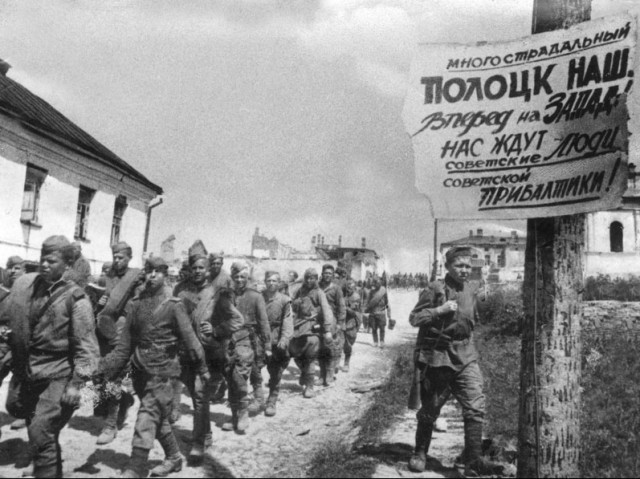
Many thousands again died in the cold winter months of 1942 and early 1943, all the while locked into battle with wave after wave of new Soviet soldiers coming forward. This winter however would not be the same as the one before, the Soviets relentless fighting, use of ‘Scorched Earth’ tactics (Whereby any land lost to the Germans would first be destroyed as to leave them nothing to live off) and the resupply of soldiers and equipment from deep behind the front hampered the German war machine. The simple truth it seemed for the Germans was that they purely did not have enough men to successfully beat the Soviets. The incomprehensible size of the Soviet Union began to dawn on them. As the Germans pushed further forward the land continued to stretch on, as if it was endless. All the while they lost more men, more supplies and ultimately the will to continue diminished.
The Germans believed that the Soviets would eventually surrender. Little did they know, Stalin and the Soviets would never surrender. As the Germans reached the Volga (a symbolic river in Russia that eleven of the largest cities in Russia share) in late 1942, with the entirety of the Asian Soviet Union still untouched, they believed the war in the Soviet Union would soon be over. One German soldier wrote home, ‘I would like to share with you a little glimmer of hope. Our division will have fulfilled its duty as soon as Stalingrad falls. We should then, God willing, see each other again this year. If Stalingrad falls, the Russian Army in the south is destroyed’. Another soldier believing reaching the Volga symbolised the end for the Soviet Union wrote, ‘The Volga is reached’ and ‘Stalingrad will fall’.
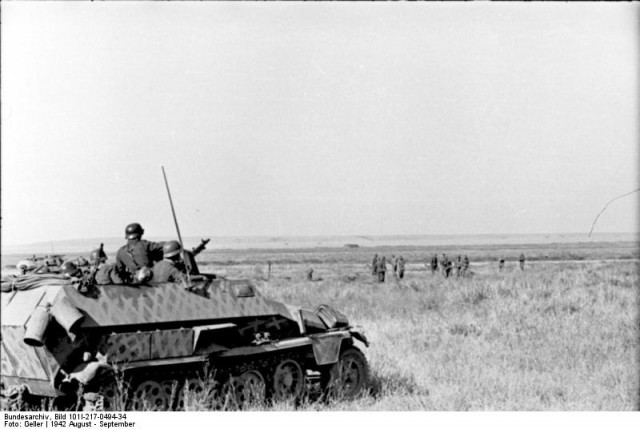
This was not just a view of the few, many generally believed that soon the Soviets would surrender, and the war in the East would be over. However in stark comparison to this, Stalin ordered ‘We shall never surrender the city of our birth. Let us barricade every street. Let us transform each district, each block, each building into an impregnable fortress’. The Soviets would not be broken, they would never surrender.
Elsewhere in the world the German armies were locked into numerous battles – at sea in the Mediterranean and the Atlantic, in Africa in vast tank battles, in Yugoslavia against rebel factions and by night the heart of Germany, as industrial cities such as Cologne, Dresden and even Berlin where continually bombed. The German war machine, after being constantly locked into battle continually all over the world since the late summer of 1939, began to crack, and all the while Stalin and his Red Army grew stronger and stronger. Although the regular soldier within the Red Army may have not had as much training as they should (one report suggests a battalion from Siberia had only a dozen days training) the Soviets were able to mount armies of huge numbers continually as the Germans were spread further and further, lacking both troops and equipment.
By the time the winter of 1942-1943 had passed the Germans were near breaking point. Battles such as Stalingrad left the Germans bewildered at how the Soviet’s perilous, unforgiving and relentless defence could be beaten. As 1943 came around, inevitably the tables finally started to turn as the Soviets, now fully mobilized due to the vast land behind the front used for technologically industrialising their armies, was in full swing. In Africa the Germans were defeated by the British at El Alamein in November, whilst the joint Anglo-American force entered Northern Africa and decisively the German U-Boat peril in the Atlantic was starting to fail as newly formed Allied convoy’s continually evaded U-Boat attack.
Supplies could now therefore continue to pour across from the U.S, supplying the Soviets and their Allies. The Mediterranean Sea was next as the Allies gained naval control and the Germans began to feel trapped and stretched on all fronts. All the while the dogged attacks from the Soviets continued to mount, and as the winter months of 1943 came the Germans found themselves retreating – or at best trying to hold the lines against the Soviet onslaught. This third winter of fighting proved to be decisive. The Germans eventually began to cave in, and as the summer of 1944 came the Soviets were ready to launch a major offensive of their own.
This new Soviet offensive, codenamed ‘Operation Bagration’ (named after an 18th-19th century Russian general) was unparalleled to that of the German offensive three years before. For example, where the Germans attacked the Soviet Union with around 3,000 tanks in 1941, the Soviets attacked the then crumbling German armies with over 6,000 tanks. This was to be a battle whereby the Soviet armies would dominate and finally push the Germans back towards Berlin. Meanwhile the allies of the Soviet Union (the British, Canadians and Americans) finally launched a full scale offensive of their own from the West, codenamed ‘Operation Overlord’, more frequently known as D-Day.
This proved to be decisive, and the German armies were finally too stretched, undermanned and retreating en masse. Over the later months of 1944 and coming into 1945 the Soviets continued to push westward towards Berlin as the Anglo-American forces pushed Eastwards, through the Ardennes. By the time 1945 came around the German armies were capitualizing all over Europe, their allies of Italy surrendered and subsequently turned on Hitler and the downfall of Nazi Germany was almost complete.
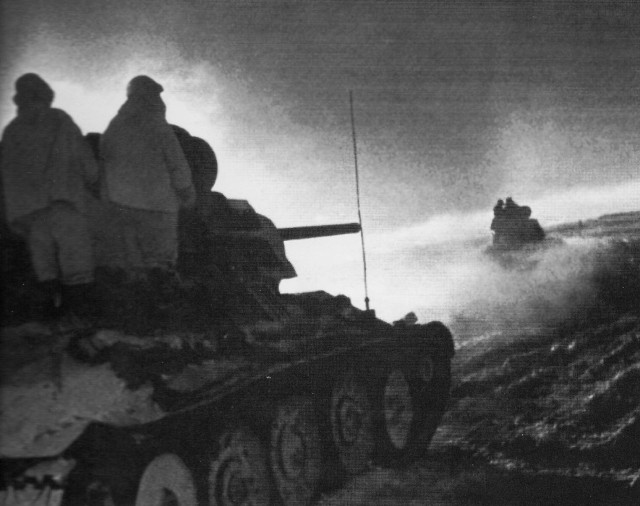
Only by the pure determination not to be beaten, the continual effort to fight to the last man and the dogged will by the Soviets was the defeat of Nazism possible. Where the Anglo-American Allies fought small battles on Hitler’s ‘limbs’ throughout the Mediterranean, Africa and the Atlantic, the Soviets maintained a head first, full on battle of annihilation for over three long years straight into the dragons mouth.
Eventually the Anglo-American forces mounted full scale attacks in Europe and to great effect, but for years the Soviets continued their struggle against Nazism, with no break. Their heroic final defiance of Nazi Germany and their staggering ability to transform their military prowess within the space of the war whilst being under attack from one of the most formidable armies in history was testament to their victory. This can be seen long after WWII, and still today as Russia stands strong as one of the most powerful countries in the world.
Continues tomorrow!
About the Author
My name is David J. Armstrong (BA Hons) and I am a British military historian from Buckinghamshire. I graduated from university with a degree in War & Conflict in 2014. Since then I have been writing my first non-fiction book about ‘D-Day’ along with other short pieces as found on my blog. I will be attending university again in 2016 and studying towards my MA Degree in Military History with the hope of continuing on to my PhD in the same subject thereafter.
I love to research, learn and write about history. My specialist subjects and my real passions are the wars of the 20th century including WWI and WWII. You can find me as part of various historical associations such as the Historical Writers Association and you can also find me on twitter as @djahistory.
On my blog you will find a collection of work – things that I am working on (such as articles and reviews, historical volunteer work and articles for online sites and magazines), things that I have done in the past and things that generally interest me within history (Including historical sites and museums I visit, books I read and articles I am intrigued by).
Please feel free to comment on my blog posts and follow me. I hope you enjoy my work.
